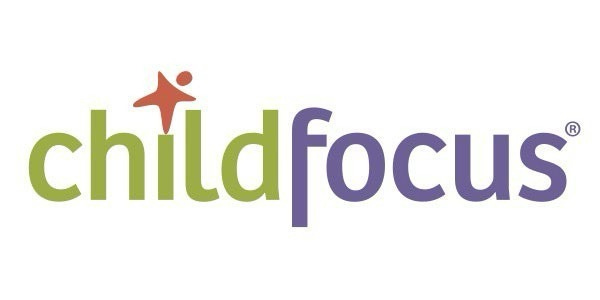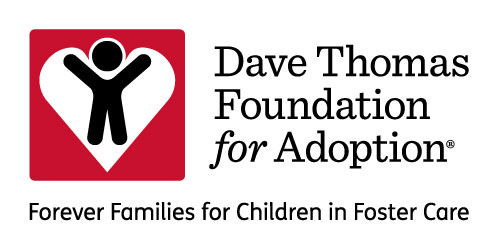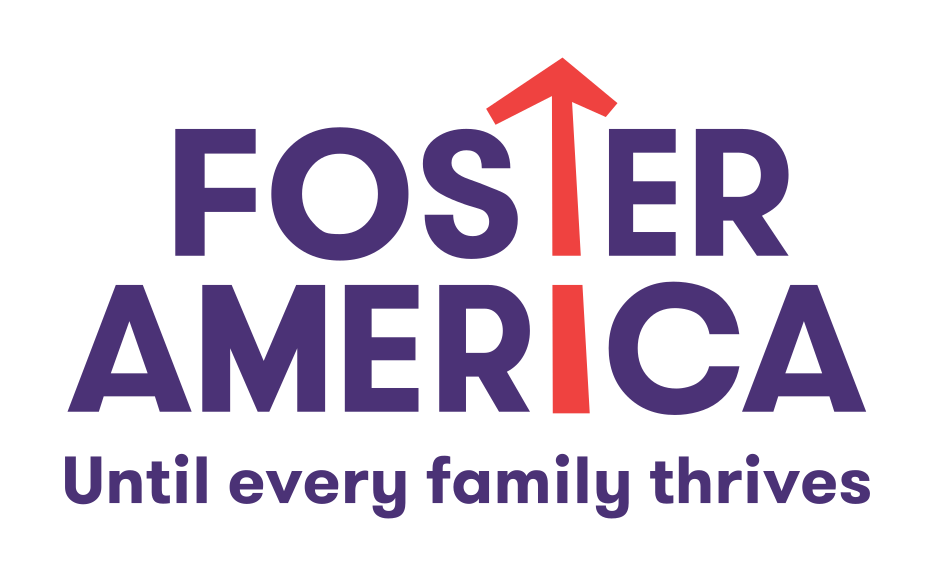Weekly Wonk: How'd ACF Grants Fare in FY25?
From the Founder’s Desk
Welcome, Wonks.
Nearly three weeks into Fiscal Year 2026, the government remains closed.
Talks to reopen remain stuck. So this week we’ve got something special for you.
Our Deep Dive analyzes Administration for Children and Families (ACF) grants in 2025; how they fared amid unilateral funding cuts, and what may come next.
And it’s a two-part series, with ACF contracts coming in a future one not to miss.
For those translating research into policy, our latest Children and Family Research Roundup brings August and September’s most relevant studies to your fingertips.
Let’s go.
From the Wonk Briefing Room
The latest Wonk Briefing Room release is a new Children & Family Research Roundup—our tool to close the gap between research and real-world decision-making.
Children and Family Research Roundup
New Research for Policymakers to Drive Decisions
Many healthcare providers have yet to incorporate professional guidelines for treating youth in foster care.
The American Academy of Pediatrics first published recommendations in 2005 for treating youth in foster care, including practice parameters for primary and behavioral health care, time frames for key visits, procedures, and other important guidelines.
A survey of over 180 pediatric nurse practitioners by VanGraafeiland and colleagues found almost half were not utilizing those recommendations.
Nurse practitioners had widespread knowledge gaps for treating foster youth, particularly on Medicaid rules, trauma screening protocols, and consent procedures.
Practitioners with more knowledge about treating foster youth were better at identifying physical and mental health risk factors.
The general public often does not recognize emotional abuse as harmful, unless it is extreme.
A systematic review by Morgan and colleagues of 39 relevant studies shows public attitudes consistently minimize emotional abuse.
Emotional abuse only registers as “real harm” when it’s overt and repetitive.
The prevalence and damage of emotional abuse are under-recognized by the public and under-studied by researchers.
We don’t know enough about whether people are as willing to intervene when witnessing emotional abuse compared to other maltreatment types.
Why these findings matter
We continue to see gaps between best practices and professional guidelines, and how professionals and the general public approach child maltreatment.
If you want access to the full Roundup—and every Wonk analysis that dives deeper—join our premium community, the Wonk Briefing Room.
Weekly Wonk Deep Dive
Steady So Far: ACF’s Quiet Continuation of Most FY2025 Grant Funding
By Robin Ghertner, Director of Strategic Policy Intelligence
BLUF
The Administration for Children and Families obligated a total of $63.9 billion in grants during fiscal year 2025, on a total of 12,166 awards.
Since the Trump Administration began, ACF grant funding decreased by about 3 percent, representing $1.9 billion. These decreases affected a total of 1,599 awards.
$1 billion of the decrease was from the Office of Refugee Resettlement.
When compared with the prior year, this funding decrease is nearly the same amount.
In fiscal year 2025, ACF reduced funding by 3 percent.
In fiscal year 2024, ACF reduced funding by 4 percent.
For programs funded by the Children’s Bureau (CB), most of the decreases in obligations were not likely cuts, as the amount deobligated in 2025 was in line with FY2024.
Title IV-E funding for foster care and adoption assistance made up over 80 percent of all CB funding — $4 billion and $3 billion respectively.
Foster care deobligations totaled $90 million (2 percent), while adoption assistance deobligations totaled $38 million dollars (1 percent).
Neither of these decreases were meaningfully different from 2024.
Cuts in 2026 may still be coming, either through new appropriations or through new administrative action by ACF.
The Push to Cut—and What ACF Actually Did
Immediately after taking office, the Trump Administration moved to claw back spending that was already appropriated and, in large part, obligated.
The Office of Management and Budget and Department of Government Efficiency (DOGE) put out guidance, embedded new staff charged with leading cuts, and directed agencies to establish aggressive targets for cuts.
Many early cuts were tied with funding perceived to support DEI or LGBTQI+ initiatives, but the larger mandate was broader: cut spending across the board.
At HHS, agencies in particular were told to cut funding deeply. The Centers for Disease Control and Prevention (CDC) and the National Institutes of Health (NIH) drew headlines for high profile cuts to research and vaccines.
But what actually happened at the ACF—the second-largest grantmaker in HHS after the Centers for Medicare and Medicaid Services—has gone largely unexamined. Until now.
This is where the Wonk steps in. Now that fiscal year 2025 is over, the numbers tell the story: what ACF promised to fund, and how much of that promise was rolled back.
This analysis focuses on grants; we’ll dive into contracts later on.
A Critical Note on Methods
Federal agencies move money in two main ways:
Grants: The government funds others – such as states, tribes, or non-profit organizations – to carry out public purposes aligned with federal priorities.
Grants include cooperative agreements, a special type that has more direct federal involvement in design or implementation.
Contracts: The government buys goods or services for its own use.
It’s important to know that this analysis focuses on grant obligations—the government’s commitments to fund those awards—not actual spending.
Because the fiscal year has ended, we can safely say that obligations equate actual spending.
But reductions in those obligations, called deobligations, can happen for several reasons.
While they can reflect policy decisions to change a grant’s scope or terminate it entirely (i.e. cuts), deobligations are most often done as part of routine business that reflect administrative or technical adjustments.
The data I use are from USA Spending, the main data source on federal grant financing. Unfortunately, the data can’t reliably tell us the reason for a funding decrease.
To test whether the Trump Administration actively reduced ACF grants, we compared FY2025 deobligations with FY2024, the final year of the Biden Administration.
Similar rates suggest business as usual; sharper drops would signal cuts and a policy shift.
The data can also only tell us about funding on awards through 2025, not future commitments.
Awards can be issued for up to 5 years, with each year new funds added through a continuation award. I can only analyze data that tell us about funding on an award in FY2025; the data can’t tell us anything about future obligations.
For more on our approach, assumptions, and how grants and obligations work, refer to the Methods section in the standalone version of this piece.
Despite the Rhetoric, ACF’s Nearly $64 Billion in Grant Awards Was Largely Untouched
ACF awarded a total of $63.9 billion in grants FY2025, on a total of 12,166 awards.
Since the Trump Administration began, ACF grant funding decreased by about 3 percent, representing $1.9 billion. These decreases affected a total of 1,599 awards.
$1.9 billion sounds like a lot (and it is), but context matters.
When compared to the previous year, ACF’s decrease in grant funding by nearly the same amount.
In fiscal year 2025, ACF reduced funding by 3 percent; whereas in fiscal year 2024 ACF reduced funding by 4 percent. That difference is equivalent to a rounding error.
Let’s break down where ACF spent its grant funding, and where decreases happened.
Where ACF Spent the Most Dollars, and Where They Decreased the Most
ACF’s Office of Family Assistance (OFA), which oversees TANF, funded over $17 billion in grant awards, the most among ACF offices.
This is followed by the Office of Head Start, which oversees Head Start and other early education programs, with nearly $11.7 billion in grant funding.
Figure 1 lays out total funding for fiscal year 2025, and reductions in funding obligations after President Trump took office.
The Children’s Bureau (CB) – funding most child welfare programs and services – awarded $8.6 billion in fiscal year 2025.
It decreased obligations by $181 million since President Trump took office. There was no meaningful difference in the decrease in obligations between FY2024 and FY2025.
Meanwhile, the Office of Refugee Resettlement (ORR), which oversees refugee resettlement and programs for unaccompanied children, cut the most grant funding by just over $1 billion, representing a 30 percent decrease in obligated funding.
All ACF offices show some reduction in obligations, but ORR’s decline stands out. Its grant obligations dropped far more than in prior years—and unlike the routine deobligations seen elsewhere, this decrease largely reflects policy change.
ORR’s grant obligations are directly tied to the number of refugees entering the country, and the number of unaccompanied children entering HHS custody.
Policy choices by the Administration caused both of those numbers to decline almost immediately after President Trump took office.
Additionally, ORR dramatically shifted its approach to serving these populations, cutting services like legal aid and permanency initiatives.
ACF’s Grant Counts Tell a Similar Story
The Office of Head Start issued the most number of grant awards in FY2025: 3,158.
The Children’s Bureau came in second, with almost 2,500, followed by the Office of Child Care, with just under 2,300.
Figure 2 gives the number of grant awards and awards with deobligations since inauguration.
The Children’s Bureau had the most grant awards with deobligations—613 awards, totaling almost $182 million.
The Office of Head Start had 423 grant awards with deobligations, totaling almost $315 million.
Diving into Children’s Bureau Funding
Digging into the data further, Figure 3 breaks down CB funding by program area, and how each area was impacted by grant decreases. Some takeaways:
Most of the decreases are all in line with decreases from FY2024, which suggests that most programs were not actual cuts but rather standard deobligations.
Title IV-E for foster care and adoption assistance make up over 80 percent of all CB funding - $4 billion and $3 billion respectively.
Title IV-E funding decreased by $90 million (2 percent), while adoption assistance funding decreased by $38 million dollars (1 percent). Neither of these decreases were meaningfully different from 2024.
The Chafee Education and Training Vouchers Program—with $41 million in awards—lost the greatest percentage of its funding among all programs (21 percent).
This decrease is comparable to 2024, which suggests this program was not targeted for policy purposes.
Rather, it is most likely due to issues we’ve previously covered with state difficulty disbursing these funds.
Documented in a report from GAO, this has drawn bipartisan interest.
Title IV-E prevention funds totaled just under $138 million, and had a decrease of $8.7 million after inauguration.
Two programs saw substantial less funding deobligated in 2025 compared to 2024: the Chafee Foster Care Program for Successful Transition to Adulthood, and the Adoption and Legal Guardianship Incentive Payments Program.
Both of these programs had over 30 percent of funds deobligated in FY2024, whereas in FY2025 less than 7 percent of funds were deobligated.
ACF Grants Held Steady—but the System May Not Feel It That Way
ACF’s grant totals barely moved in FY2025, but stability on paper doesn’t mean stability in practice.
Staff cuts in ACF mean less technical assistance for states to clarify complex rules and requirements. Approvals for state plans or waiver requests, guidance on complex issues, and grant reviews may take longer.
Or they may be more cursory.
The closing of ACF regional offices is particularly relevant, as now more requests from states and other grantees have to be processed by central offices that aren’t equipped for it.
Many states already saw delays in approval of continuation awards on ACF grants for FY2026, a historically routine process. Continuations can be signed at any point during the fiscal year.
But many grantees experienced radio silence from ACF on the status of their awards until they were finally awarded towards the end of the year.
This level of uncertainty has made it difficult for states to plan their own budgets, staffing levels, and contract commitments.
Beyond ACF, cuts across HHS and other federal agencies still ripple into child welfare. Cuts to other federal funding sources can affect finances and service options for child welfare agencies.
State and local agencies often receive funding from, or rely on services funded by, other parts of HHS, such as its behavioral health agency, the Substance Abuse and Mental Health Services Administration.
They also rely on other arms of the federal government, including the Department of Justice, the Department of Education and the Department of Housing and Urban Development.
The most consequential pressure point, though, is Medicaid. The One Big Beautiful Bill Act (OBBBA) cuts nearly $1 trillion in Medicaid spending reductions over the next decade.
Even if those dollars don’t flow directly to child welfare agencies, they underwrite much of the care families and children receive—mental health and substance use treatment, developmental supports, and medical services for children in foster care.
In short: ACF’s grants may look steady, but that doesn’t mean families and agencies won’t feel the broader effects of the Trump Administration’s cuts.
And of course, with inflationary pressures eroding the purchasing power of every dollar, these funds can’t buy as much as they did even a year ago either.
Cuts Could Still Come in 2026—Because of, or Despite, the Budget Impasse
The lack of significant funding cuts in FY2025 doesn’t mean they aren’t coming in 2026. One mechanism is what ultimately happens with federal appropriations, currently stalled in Congress.
It’s possible a final spending agreement could provide lower funding that reduces resources for ACF grantees.
That pathway would take some time to play out; cuts in appropriations would be more likely to affect grantees in FY2027 than in 2026, since that’s when new grant awards would begin performance.
Even if federal appropriations are relatively flat for ACF, ACF has several ways to reduce grant funding in 2026, even for awards already issued.
The Administration has already shown a willingness to test strategies of questionable legal durability, like impoundment of appropriated funds or the cancellation of agreements based on their divergence with Administration policy, even when commitments have been made to grantees.
The delays in approval of continuation awards mentioned above is itself a signal to watch.
In the past, agencies would not approve grant continuations for two reasons: lack of funding availability (i.e. Congress didn’t appropriate enough funds) and performance issues. This has been a relatively rare occurrence, at least in ACF.
Performance issues historically have to be well-documented by the government, often require an opportunity to improve, and can be challenged.
But as of October 1, HHS adopted new federal regulations that permit ACF to terminate a grant “if an award no longer effectuates the program goals or agency priorities.” (2 CFR 200.340(a)(4), issued April 22, 2024).
It remains to be seen how HHS and ACF will interpret this text, and the extent to which it could be used to terminate grants or reduce award amounts.
It’s also unclear how such action would stand up to legal challenges.
And beyond appropriated amounts for 2026 (when a budget is passed), the White House will be issuing its first full budget request in February.
This will be a clear indicator of ACF’s priorities for future fiscal years, and signal levels and program areas for funding.







